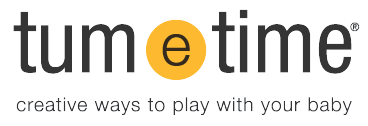This is more Bay Area related….Have you been to Small Talk Family Cafe in Walnut Creek?
I haven’t stopped by yet, but please let me know your thoughts. I’m always looking for new places to recommend to families in my classes.

This is more Bay Area related….Have you been to Small Talk Family Cafe in Walnut Creek?
I haven’t stopped by yet, but please let me know your thoughts. I’m always looking for new places to recommend to families in my classes.
6 week mom’s group for new and second time moms starting June 17th in Rockridge! Facilitated by a licensed MFT, the group provides community, support and information to aid you in this momentous life transition. Email rainedougan@gmail.com or check www.oaklandmom2mom.com for more information.
Need some support in wanting to co-sleep with your baby? Here is an article that may help you understand the reasons behind co-sleeping.
This is taken from Midwifery Today:
“The Role of the Shy Hormone in Breastfeeding
There is no breastfeeding without oxytocin, since the milk ejection reflex is dependent on the release of this hormone. The mechanical effects of oxytocin have been well known for a long time, not only for inducing contractions of specialized breast cells during the milk ejection reflex, but also for inducing uterine contractions during childbirth and orgasm, and for inducing contractions of the prostate and seminal vesicles in the sperm ejection reflex. The behavioral effects of oxytocin are also well understood; it is commonplace today to summarize these effects by using the term “love hormone.”
We have still a lot to learn about oxytocin release. However, we have a sufficient amount of physiological and observational data to conclude that the release of oxytocin is highly dependent on environmental factors. The best way to summarize what we already know is to claim that oxytocin is the “shy hormone”: it behaves like a shy person who does not appear among strangers or observers.
This is the kind of knowledge that is not easily digested where breastfeeding is concerned. I have heard many stories of mothers who required guidance to overcome breastfeeding difficulties. The advice they received almost always focused on the position of the baby when latching on. Common recommendations would be different if it were better understood that many difficulties in breastfeeding are related to the release of the shy hormone. Instead of being guided to find the right postures, the mother might be first advised to stay with only her baby in a small dark room with the door closed and the guarantee that nobody will enter. It is well demonstrated that the shy hormone does not appear in situations associated with a release of adrenaline. This implies that the room must be warm enough to make comfortable skin-to-skin contact between mother and baby possible. I know from experience that such simple suggestions can help break a vicious circle during a critical phase of lactation.
An analogy to breastfeeding is possible with childbirth. In the framework of natural childbirth, I have often heard stories of very long and difficult labors. A common comment is, “We tried everything,” when the meaning of this comment is, “We tried a great diversity of postures, nipple stimulation, massage, acupuncture, a birthing pool, etc.” It is not common to hear that the baby’s father, grandmother and second midwife, for example, had been sent away so that finally the laboring woman was left alone, save for an experienced, silent and low profile midwife.
— Michel Odent
Excerpted from “The Role of the Shy Hormone in Breastfeeding,” Midwifery Today, Issue 101″
I’m reaching out as I am leading a team for Climb Out of Darkness 2014. It is a walk to raise awareness and funds for Postpartum Progress and support maternal mental health. My deep hope is to also build some local community and even start a peer support group with other moms in the area.
The Berkeley Climb is on Saturday, June 21st at 9:30 am, Inspiration Point in Tilden Park (more details TBA- the trail is stroller friendly).
Participants DO NOT have to fundraise to be a part of it. As a mom who struggles with PPD/PPA, I understand that sometimes it is hard enough to get out the door, never mind asking other folks for money while you do it! Raising money for this wonderful organization is great — getting connection and support is even better!
This link has all the info about Postpartum Progress and the Climb in general:
http://postpartumprogress.org/
This link has specifics for Team Berkeley and there is a button to register for the team:
https://www.crowdrise.com/
People can also contact me directly at suzansnyder@gmail.com
Susan